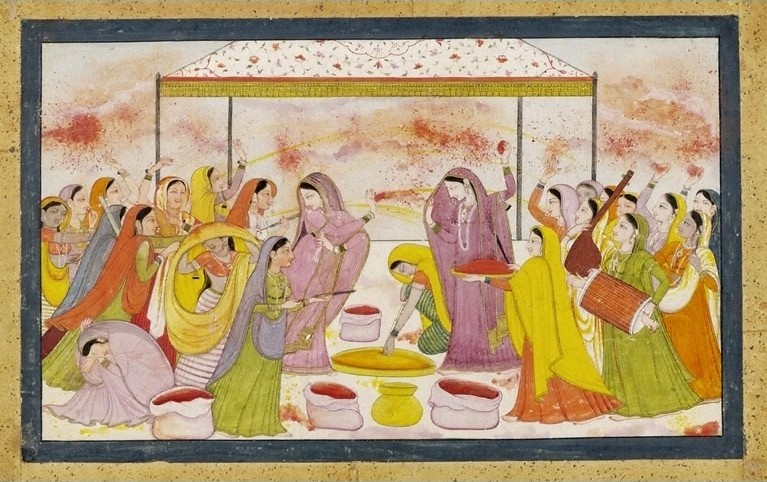|
In India, if you utter the word "Rajasthan", the listener would
imagine the paintings and the festivals of the region. It is because this area
has been one of the major contributors and an influential hub of Indian
paintings. You will find art everywhere. The decoration of houses, the
courtyards, and other parts of the household buildings were the subjects to
portray the creative genius of the Rajasthani paintings.
The Art Miniature paintings are perhaps the most impressive and the unique styles
that existed in India in general and in Rajasthan in particular. From the
commencement of the sixteenth century here thrived the different schools of
paintings. Here are some important names of the schools: the Mewar School, the
Bundi-Kota kalam, the Jaipur, Bikaner, Kishangarh and Marwar schools. The names
of the schools mainly show the names of a particular region wherein the art
thrived.
Ragmala The word Ragmala means the garland of Ragas; it is a set of vocal rhythms based on classical Indian music. In this type of paintings, one of the ragas is selected and the painting is done to depict the soul of that raga. It describes the essence the raga is carrying with or is proficient in creating certain effects when such raga is sung. With the expanse of the religious sect Vaishnavism, a sub-sect of Hinduism, in the early Eighteenth Century, the tales of Hindu mythology became a major source for the artists. The books like Gita Govinda came to be seen as a popular pictorial theme in various art centres in Rajasthan and Gujarat. During this period the Poems of Gita Govinda were extensively illustrated in miniature paintings and other artworks like Pahari Painting and other illustrations.
Indian Schools of Paintings: Each school of painting had its own characteristics.
For example, the flowing rivers, the thick forests, grassy fields of the
Kota-Bundi region: these all were illustrated. These were the subjects painted into the
paintings of these regions. Some artists painted hunting, whereas some covered
the animal fights. Women portrayed in these paintings are elegant, with
well-proportioned costumes. They used bright colours mainly, with red
prominently appearing in the background of an art piece.
 |
| Radha celebrating Holi, c1788. Kangra, India AnonymousUnknown author Victoria Albert Museum, London |
|
Paintings of Radha and Krishna With the spread of the religious sec Vaishnavism, the paintings of Radha and Lord
Krishan became one of the prime subjects for artists. This work consists
much of the Rajasthan style of miniature paintings.
Rajput painting is one of the conventional methods of paintings
in Rajasthan. This beauty-clad style of painting prospered in the
late seventeenth century and grew in the 18th century. Inspired by the Mughal
miniatures, the Rajputana or Rajasthan paintings became the major creative
occupation of the royal courts of western India.
Many princely states in the then Rajasthan had developed their
distinguished styles, but they have maintained their well-defined features.
Rajputana art depicts several themes: the events of great religions books like
Ramayana and the Mahabharata. The incidences of Lord Krishna’s life were still
their favourite.
Those were the paintings and they were stored in the
albums sponsored by the kings. The artists had developed newer resources to
paint on: they depicted their work on the walls of palaces, on the inner rooms
of the forts and Havelis, the big residential dwellings of the Lords. Among
them, the palaces built by the Shekhawat Rajputs are outstanding.
These arts tell us the narrative of that period; they educate us
about the way of life and habits of the people and their pursuits, The
lifestyles and the court proceedings of the court were also the prime
subjects. With the spread of Vaishnavism, in the early Eighteenth
Century, the poems of the book named Gita Govinda were regarded as a sacred and
paint-worthy theme. In some of the art centres of the state of Rajasthan
and